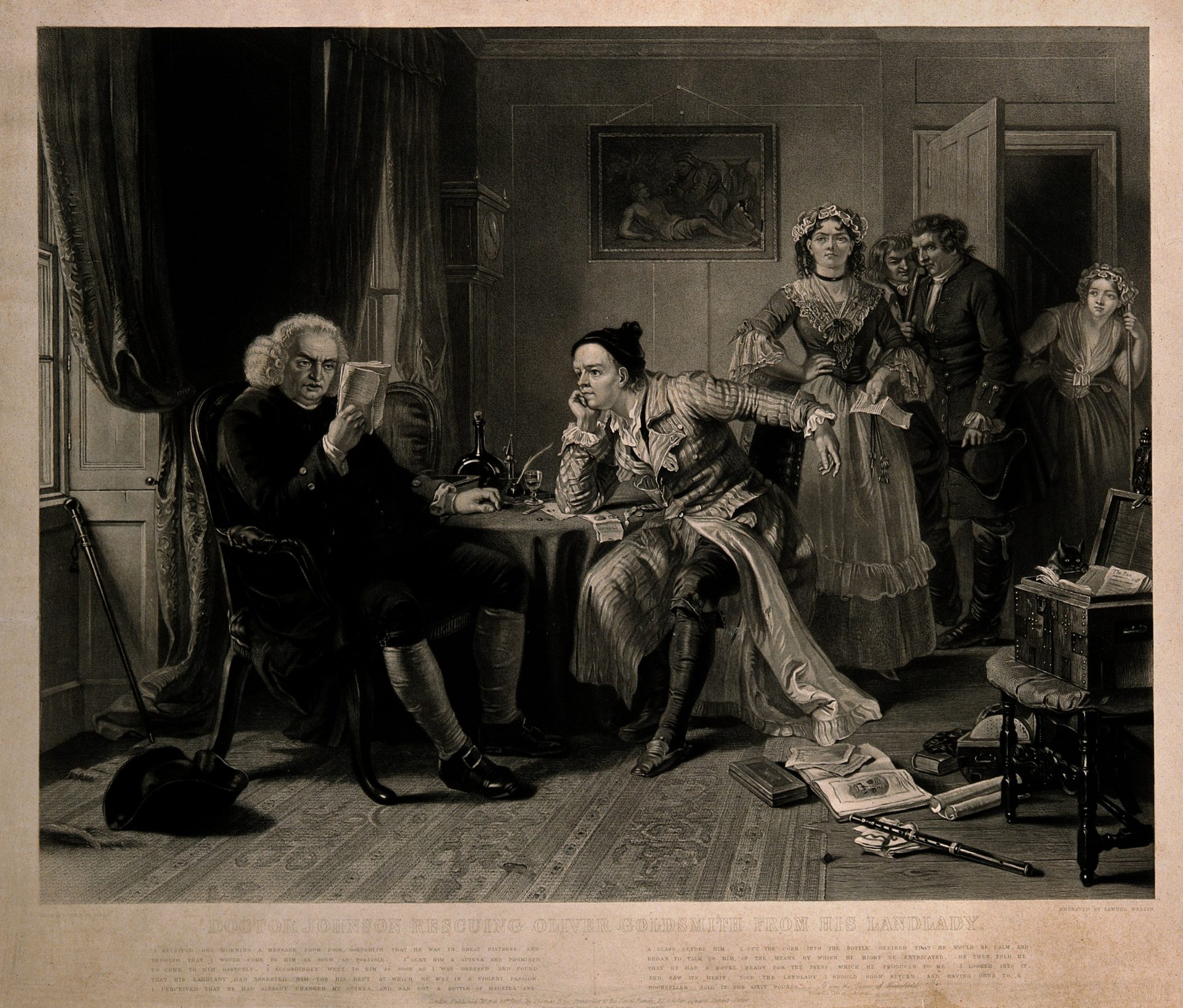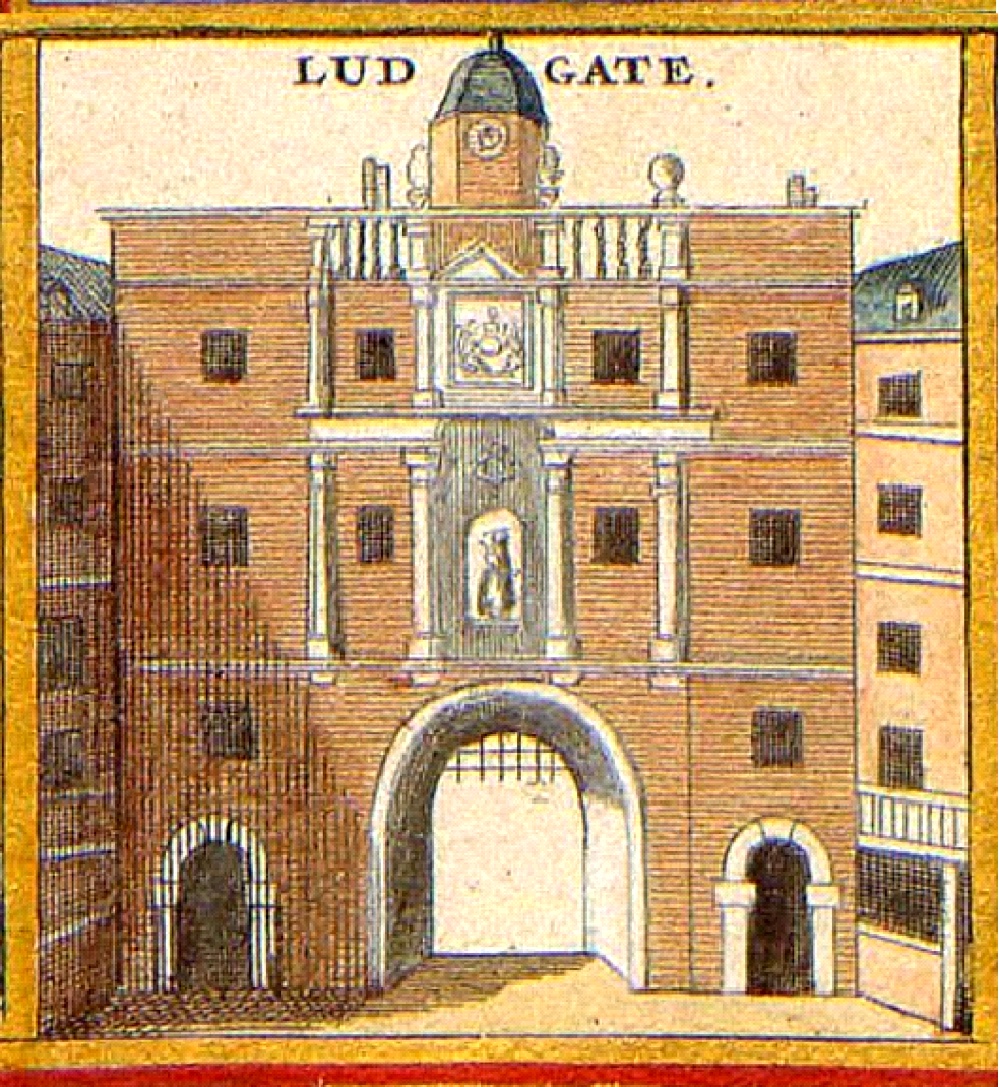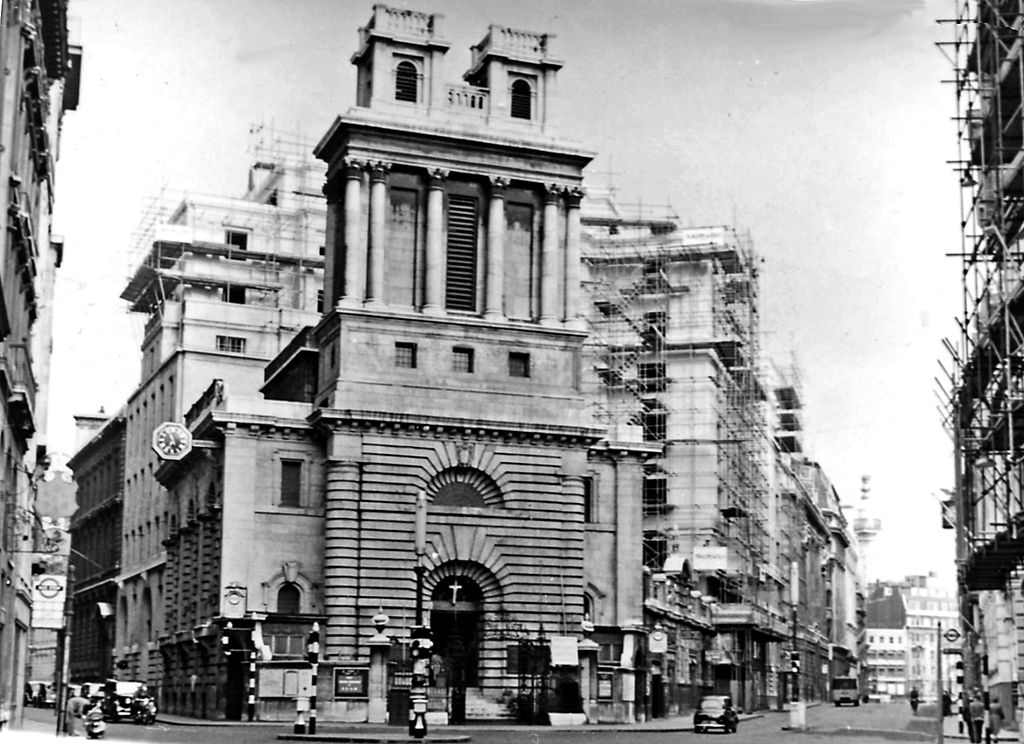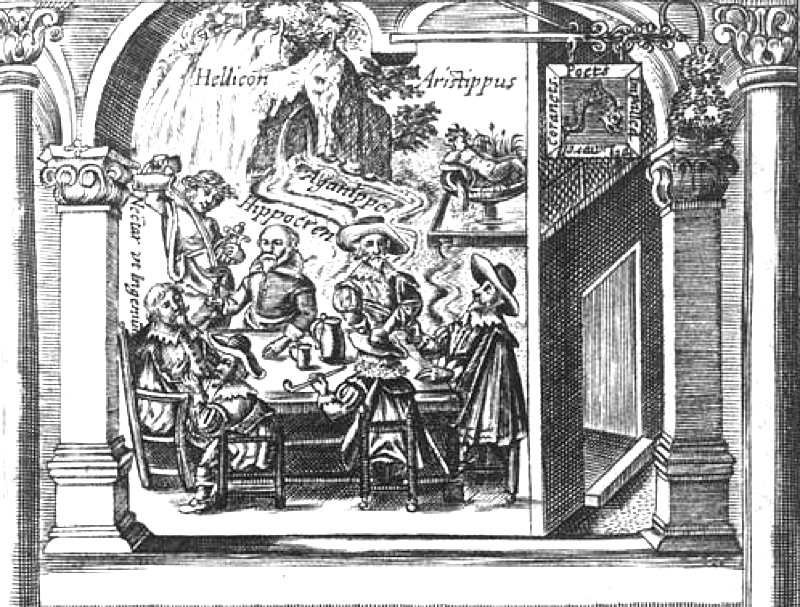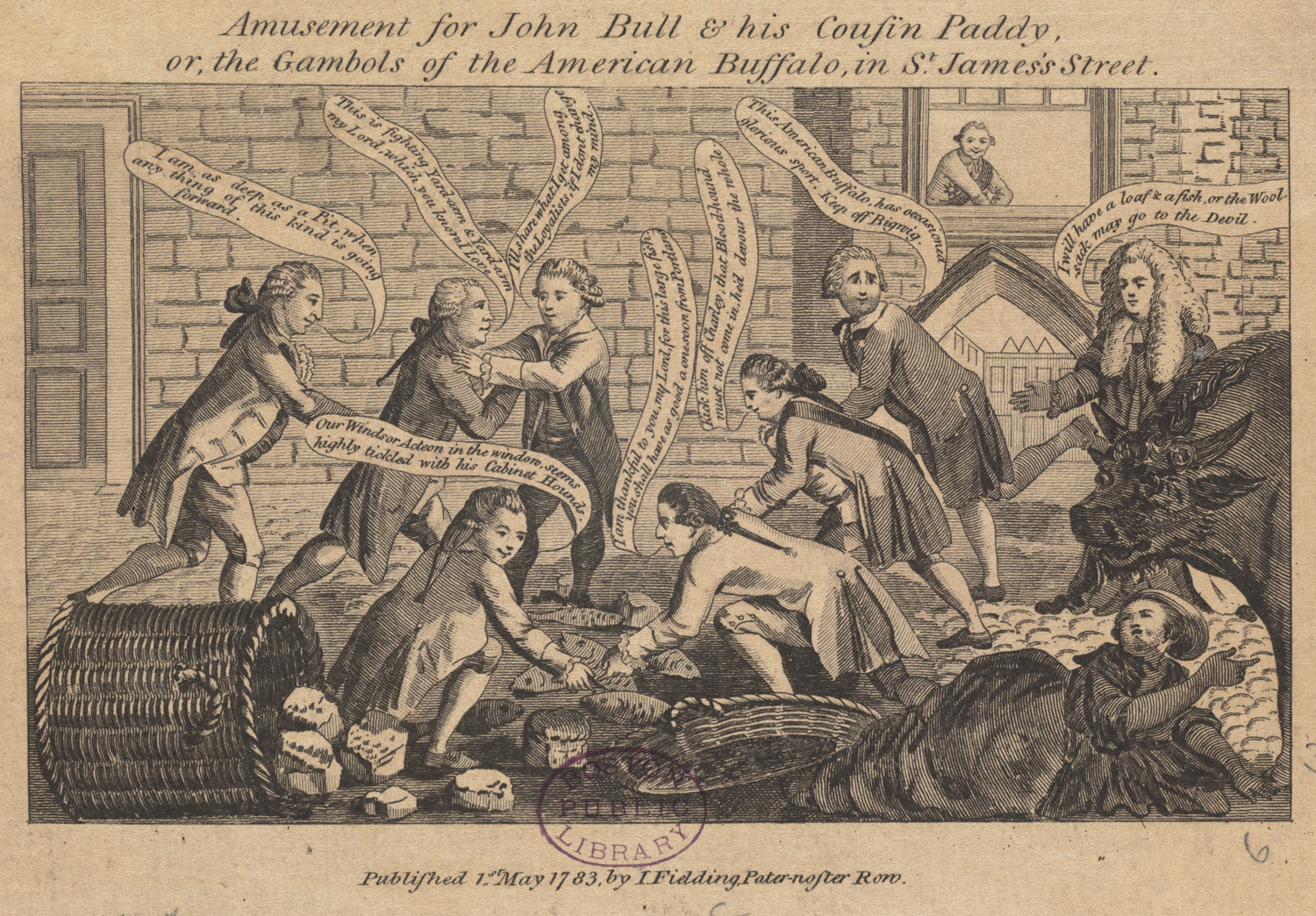The Old Bailey, Literary London, By Pen Lister. October 13, 2017. Categories: Literary London, Learning Journeys. Tags: learning-point, London
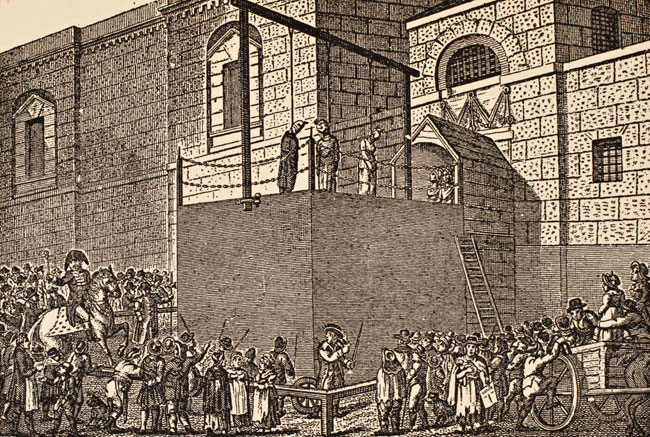
Continuing west, we turn right into Old Bailey and continue until the central criminal courts and the location of the former Roman and medieval city gate of Newgate. Newgate was demolished in 1767 and housed the original prison. The rebuilt Newgate prison was almost destroyed in the Gordon Riots of 1780. The 23 year-old engraver (and future visionary poet and artist) William Blake was in the crowd at Newgate as the prison burned. The wall of the fire-damaged prison was painted with the name of ‘His Majesty, King Mob’ by whose authority the inmates had been freed.
Daniel Defoe spent four months in Newgate in 1703 until Tory politician Robert Harley, the Earl of Oxford and Speaker of the House of Commons intervened. Defoe became a secret agent and political journalist for Harley, agitating for the Tories against his dissenting convictions and single-handedly writing the Review between 1704-1713. Defoe’s experience of Newgate is given to his character Moll Flanders (1722), who is born there and describes it as:
‘… an emblem of hell,’ and ‘That horrid place! My very blood chills at the mention of its name; the place where so many of my comrades had been locked up, and from whence they went to the fatal tree; the place where my mother suffered so deeply, where I was brought into the world, and from whence I expected no redemption but by an infamous death: to conclude, the place that had so long expected me, and which with so much art and success I had so long avoided.’ Defoe (Moll Flanders).
The misery of Newgate continued for many years. Charles Dickens describes his visit in Sketches by Boz (1836):
’ … these same men, day by day, and hour by hour, pass and repass this gloomy depository of the guilt and misery of London, in one perpetual stream of life and bustle, utterly unmindful of the throng of wretched creatures pent up within it — nay, not even knowing, or if they do, not heeding, the fact, that as they pass one particular angle of the massive wall with a light laugh or a merry whistle, they stand within one yard of a fellow-creature, bound and helpless, whose hours are numbered, from whom the last feeble ray of hope has fled for ever, and whose miserable career will shortly terminate in a violent and shameful death. Contact with death even in its least terrible shape, is solemn and appalling. How much more awful is it to reflect on this near vicinity to the dying – to men in full health and vigour, in the flower of youth or the prime of life, with all their faculties and perceptions as acute and perfect as your own; but dying, nevertheless – dying as surely – with the hand of death imprinted upon them as indelibly – as if mortal disease had wasted their frames to shadows, and corruption had already begun!’ ‘Visit to Newgate.’
Charles Dickens, Great Expectations – the returned convict Magwitch is sentenced to death
‘I could scarcely believe, even as I write these words, that I saw two-and-thirty men and women put before the Judge to receive that sentence together. Foremost among the two-and-thirty was he; seated, that he might get breath enough to keep life in him. The whole scene starts out again in the vivid colors of the moment, down to the drops of April rain on the windows of the court, glittering in the rays of April sun. Penned in the dock, as I again stood outside it at the corner with his hand in mine, were the two-and-thirty men and women; some defiant, some stricken with terror, some sobbing and weeping, some covering their faces, some staring gloomily about. There had been shrieks from among the women convicts; but they had been stilled, and a hush had succeeded. The sheriffs with their great chains and nosegays, other civic gewgaws and monsters, criers, ushers, a great gallery full of people,—a large theatrical audience,—looked on, as the two-and-thirty and the Judge were solemnly confronted. Then the Judge addressed them.’
‘The appointed punishment for his return to the land that had cast him out, being Death, and his case being this aggravated case, he must prepare himself to Die Rising for a moment, a distinct speck of face in this way of light, the prisoner said, “My Lord, I have received my sentence of Death from the Almighty, but I bow to yours,” and sat down again. There was some hushing, and the Judge went on with what he had to say to the rest. Then they were all formally doomed, and some of them were supported out, and some of them sauntered out with a haggard look of bravery, and a few nodded to the gallery, and two or three shook hands, and others went out chewing the fragments of herb they had taken from the sweet herbs lying about. He went last of all, because of having to be helped from his chair, and to go very slowly; and he held my hand while all the others were removed, and while the audience got up (putting their dresses right, as they might at church or elsewhere), and pointed down at this criminal or at that, and most of all at him and me.’ https://www.gutenberg.org/files/1400/1400-h/1400-h.htm
The prison was demolished in 1904 and the current law courts built on the site.
Aspects of this place to think about
How have the criminal courts influenced inner London life? What was it like to be sent there, how was it different for women and men?
- Prisoners: rich and poor
- The effect of public hanging and gallows in London for many hundreds of years
- Corruption in politics and the Law – money and influence
- The relatively recent emergence of modern policing, and crime & detective fiction
- How different people in modern London experience policing, justice and equality before the Law
Content available at the location, about the place or area
Investigate all the other icons on the Aurasma augmented trigger, use the icons guide to find out what is available.
![]()
This guide is accessed via the layers icon in the bottom left of any trigger using a similar icon to this one:

Triggering the Augmented Reality
Remember to focus on the trigger image using the Aurasma camera, centering the image to be as similar to what you see on the map as you can. The Aurasma camera provides small watermarks at each corner of its camera view to help guide your focus.
Image by Unknown – http://www.history.org/foundation/journal/summer11/prison.cfm, Public Domain, https://commons.wikimedia.org/w/index.php?curid=20493402
The Old Bailey Resources
By Pen Lister October 13, 2017
History of the Old Bailey Courthouse
London’s Central Criminal Court, 1673-1913 https://www.oldbaileyonline.org/static/The-old-bailey.jsp
Newgate Prison: a vision of hell on earth
A moving and disturbing account of what life in Newgate prison really was like. Great images. https://londoninsight.wordpress.com/2011/02/01/newgate-prison-old-bailey-london/
Dickens’s visit to Newgate
Dickens’s visit to Newgate where he sees the last men to be hanged for sodomy in England http://www.executedtoday.com/2012/11/27/1835-john-smith-james-pratt-buggery-dickens-visit-newgate/%20
Adam Hart-Davis on Newgate
Very informative and entertaining YouTube clip from Mr Hart-Davis. https://youtu.be/ipUo03Kvkms
Inside the Criminal Courts
See inside the criminal court buildings courtesy of BBC TV news, 2006 https://youtu.be/zMijvruC5WM
Newgate Prison Timeline (video)
The history of Newgate in one timeline, 1188-1902 https://youtu.be/bPZjxB6VVO0
A Grim view inside Newgate Prison
Newgate prison images from the 1890’s. Harrowing and thought provoking viewing. http://www.peterberthoud.co.uk/blog/16022016135217-a-grim-view-inside-newgate-prison-in-the-1890s/
Early 18 th century prisons in London
Early 18th century prisons in London with crimes, penalties and reform http://www.18thc-cities.paris-sorbonne.fr/Crime-in-London-65#3.1
Newgate Prison Wikipedia
Very good information here, plus sources of images https://en.wikipedia.org/wiki/Newgate_Prison
